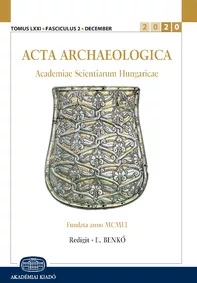Frühmittelalterliche byzantinische Kupfermünzen aus dem Raum von Orosháza (Komitat Békés, Ungarn)
Early medieval Byzantine copper coins from the Orosháza area (Békés county, Hungary)
Author(s): Péter Prohászka, Zoltán RózsaSubject(s): Archaeology, 6th to 12th Centuries
Published by: Akadémiai Kiadó
Keywords: Migration Period; Byzantine coins; Avars; Gepids; Carpathian Basin
Summary/Abstract: In this paper we present and analyse the 6th–7th-century Byzantine coins found at Orosháza and its surroundings. The first Byzantine coin – a follis of Justinian I – was found in Szentetornya in 1877. Using metal detectors during archaeological survey eight Byzantine coins had come to light: a follis of Justinian I, five folles, a half-follis of Justin II, and two folles of Heraclius. A greater part of them was accurately identified. Here we'll analyse their role outside the Byzantine Empire, as compared to the coin circulation in the Avar Age Carpathian Basin. We try to answer the question why Byzantine coins relatively frequently occurred at Orosháza and its surroundings.
Journal: Acta Archaeologica Academiae Scientiarum Hungaricae
- Issue Year: 73/2022
- Issue No: 1
- Page Range: 57-67
- Page Count: 11
- Language: German
- Content File-PDF

